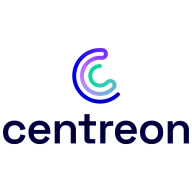

Splunk Observability Cloud and Centreon compete in the observability and IT monitoring category. Splunk appears to have the upper hand with robust data integration and customizable dashboards, which enhance utility and efficiency through detailed application performance insights.
Features: Splunk Observability Cloud is noted for its comprehensive data integration capabilities, customizable dashboards, and application performance insights. Users benefit from enhanced monitoring and reporting through tailored solutions. Centreon stands out for its flexibility, offering streamlined monitoring and alerting across infrastructure and supporting third-party module integration, enhancing its adaptability for various user needs.
Room for Improvement: Users of Splunk Observability Cloud seek more seamless integration and enhanced support for Azure and custom metrics. There is a desire for improved AI functionalities and a more favorable cost structure. Centreon could improve its cloud monitoring capabilities, integration features, and release management while enhancing its API and graphical data visualization to better meet user expectations.
Ease of Deployment and Customer Service: Splunk Observability Cloud offers diverse deployment options across public, private, and hybrid environments, delivering versatility. While customer service is generally positive, there is a need for quicker response times. Centreon is favored for on-premises deployments with technical support noted for its effectiveness and responsiveness, particularly valuable for localized setups.
Pricing and ROI: Splunk Observability Cloud is perceived as a powerful solution but comes with higher licensing costs based on data volume, often seen as expensive. However, users report a strong ROI linked to increased productivity and faster issue resolution. Centreon offers a cost-effective open-source solution with paid enterprise features. Its pricing is considered fair and competitive, offering substantial value for large-scale monitoring needs, making it an affordable choice with extensive functionalities.
Centreon provides timesaving and costsaving benefits as it lets us manage multiple devices on a single platform.
It significantly saves time by automating monitoring tasks and reduces costs as it requires fewer resources.
Using Splunk has saved my organization about 30% of our budget compared to using multiple different monitoring products.
Anyone working in front-end management should recognize the market price to see the true value of end-user monitoring.
I have definitely seen a return on investment with Splunk Observability Cloud, particularly through how fast it has grown and how comfortable other teams are in relying on its outputs for monitoring and observability.
We do not have direct access to Centreon's technical support.
If issues arise, like services appearing as down in Centreon, technical support helps check the polar-server communication.
Technical support from Centreon responds within 24 hours and resolves issues quickly.
On a scale of 1 to 10, the customer service and technical support deserve a 10.
They have consistently helped us resolve any issues we've encountered.
They often require multiple questions, with five or six emails to get a response.
Occasionally, for several hours, we do not receive any alerts, causing a business impact.
We use other tools for adding and deploying configured devices, but direct access from Centreon would be beneficial.
We've used the solution across more than 250 people, including engineers.
As we are a growing company transitioning all our applications to the cloud, and with the increasing number of cloud-native applications, Splunk Observability Cloud will help us achieve digital resiliency and reduce our mean time to resolution.
I would rate its scalability a nine out of ten.
Sometimes we do not receive alerts, causing business impact, and users ask why no alerts were received.
Centreon is a much more straightforward and stable tool compared to Icinga.
I would rate its stability a nine out of ten.
We rarely have problems accessing the dashboard or the page.
Unlike NetScout or regular agents for APM, RUM has many problems during the POC phase because customer environments vary widely.
Enhancements are needed in identifying configuration issues, providing real-time alerts in case of issues, and improving the HTTP configuration tasks.
Reliability is sometimes an issue. Centreon has a developer mode and production mode, but sometimes alerts don't come through in production mode.
While Centreon excels at server-level monitoring, it lacks the ability to track web app availability and latency, unlike Dynatrace, which is efficient in this area.
The out-of-the-box customizable dashboards in Splunk Observability Cloud are very effective in showcasing IT performance to business leaders.
The next release of Splunk Observability Cloud should include a feature that makes it so that when looking at charts and dashboards, and also looking at one environment regardless of the product feature that you're in, APM, infrastructure, RUM, the environment that is chosen in the first location when you sign into Splunk Observability Cloud needs to stay persistent all the way through.
There is room for improvement in the alerting system, which is complicated and has less documentation available.
Centreon's pricing is not very expensive.
Splunk is a bit expensive since it charges based on the indexing rate of data.
It is expensive, especially when there are other vendors that offer something similar for much cheaper.
It appears to be expensive compared to competitors.
Monitoring is a fundamental pillar of technical support, and Centreon streamlines this process, reducing the need for extensive manual checks.
Centreon's real-time monitoring, despite having some manual aspects, supports us in managing our operations effectively.
Centreon allows us to monitor all of our devices on one platform.
Splunk provides advanced notifications of roadblocks in the application, which helps us to improve and avoid impacts during high-volume days.
For troubleshooting, we can detect problems in seconds, which is particularly helpful for digital teams.
It offers unified visibility for logs, metrics, and traces.
| Product | Market Share (%) |
|---|---|
| Splunk Observability Cloud | 1.2% |
| Centreon | 2.2% |
| Other | 96.6% |


| Company Size | Count |
|---|---|
| Small Business | 11 |
| Midsize Enterprise | 5 |
| Large Enterprise | 14 |
| Company Size | Count |
|---|---|
| Small Business | 20 |
| Midsize Enterprise | 10 |
| Large Enterprise | 43 |
Centreon is an all-in-one IT monitoring solution that is a network, system, applicative supervision, and monitoring tool. It is free and open source, and one of the most flexible and powerful monitoring softwares on the market.
Centreon Features
Centreon has many valuable key features. Some of the most useful ones include:
Centreon Benefits
There are several benefits to implementing Centreon. Some of the biggest advantages the solution offers include:
Reviews from Real Users
Below are some reviews and helpful feedback written by Centreon users.
PeerSpot user Thor M., CEO at a tech services company, says, "The single-pane view provides us a view of all of our network infrastructure, and it is one of the most important tools that we use to see the status of our customers' networks. It provides a nice benefit when it comes to helping align IT operations with business objectives. The top-down views, dashboards, and business context reporting are things that are nice to have because you want to be able to show the customer that everything is working, that problems have been addressed, and that you're providing value.”
Thomas C., Managing Director, Canada at Eva, comments, “The most valuable feature of the solution is the flexibility, the ability to integrate all kinds of equipment. As long as something has an IP you can monitor it. What we try to achieve all the time is not only saying a company's system is available, but to give additional data on the performance of the equipment. So the flexibility is what matters the most to us, where we can script everything. Centreon has a lot of Plugin Packs, meaning they support, by design, a lot of devices. And on top of that, we have the ability to add our own scripts and do whatever we want and display the data as we want in the central dashboards.”
Marcilio L., President at ITS Solucoes, expresses, "The dashboards are valuable because they ease troubleshooting and viewing. It becomes easier to locate the source of a problem... The dashboards make it easier to communicate with our clients. They don't want to see the alert console, they want to see a beautiful dashboard representing their network and their business and to watch it in case something is wrong in their environment."
Florent Q., Network Engineer at a computer software company, mentions, "The most valuable feature is that we can manually configure everything we need. After it comes inside the interface of Centreon, you can display it. Because the interface is quite user-friendly, you can manually configure the configuration very deeply, which is very pleasant and useful because you can monitor and see everything on your service list, dashboard, or MAP. The most useful feature for me is that you can create your own plugin and monitoring query."
Splunk Observability Cloud offers sophisticated log searching, data integration, and customizable dashboards. With rapid deployment and ease of use, this cloud service enhances monitoring capabilities across IT infrastructures for comprehensive end-to-end visibility.
Focused on enhancing performance management and security, Splunk Observability Cloud supports environments through its data visualization and analysis tools. Users appreciate its robust application performance monitoring and troubleshooting insights. However, improvements in integrations, interface customization, scalability, and automation are needed. Users find value in its capabilities for infrastructure and network monitoring, as well as log analytics, albeit cost considerations and better documentation are desired. Enhancements in real-time monitoring and network protection are also noted as areas for development.
What are the key features?In industries, Splunk Observability Cloud is implemented for security management by analyzing logs from detection systems, offering real-time alerts and troubleshooting for cloud-native applications. It is leveraged for machine data analysis, improving infrastructure visibility and supporting network and application performance management efforts.
We monitor all Network Monitoring Software reviews to prevent fraudulent reviews and keep review quality high. We do not post reviews by company employees or direct competitors. We validate each review for authenticity via cross-reference with LinkedIn, and personal follow-up with the reviewer when necessary.